Character design is no walk in the park. While some characters may seem deceptively simple at first glance on the movie screen, creating them requires a masterful blend of skill, creativity, and vision. Uncover with us, the nine essential steps of character design and start creating iconic characters you will be proud of.
Character design is a space where creativity knows no bounds, and the joy of bringing your imagination to life is unparalleled. Crafting characters from scratch requires a lot of dedication to your projects. It is not just about drawing; it's about storytelling. Before a character says their first word or takes a step, their design and concept art speak volumes, setting the stage for their narrative journey. This blog provides tips to guide you through the intricacies of character design and empower you to unleash your artistic potential. Pick up your stylus and let’s start designing a character together.
1. Start with the Character Design Concept
Whether you're crafting cartoon characters, comic book heroes, video game protagonists, or anime icons, a character design concept delves deep into a character's backstory and personality, manifesting in their appearance. After all, exceptional character design not only captivates audiences but also drives the narrative forward.
So, what exactly is a character design concept? It's the cornerstone of the character design process, where artists sketch out various styles and ideas, breathing life into fictional worlds through unique character and scenery designs. Concept art serves as a blueprint, allowing creators to iterate and refine their vision before bringing it to fruition.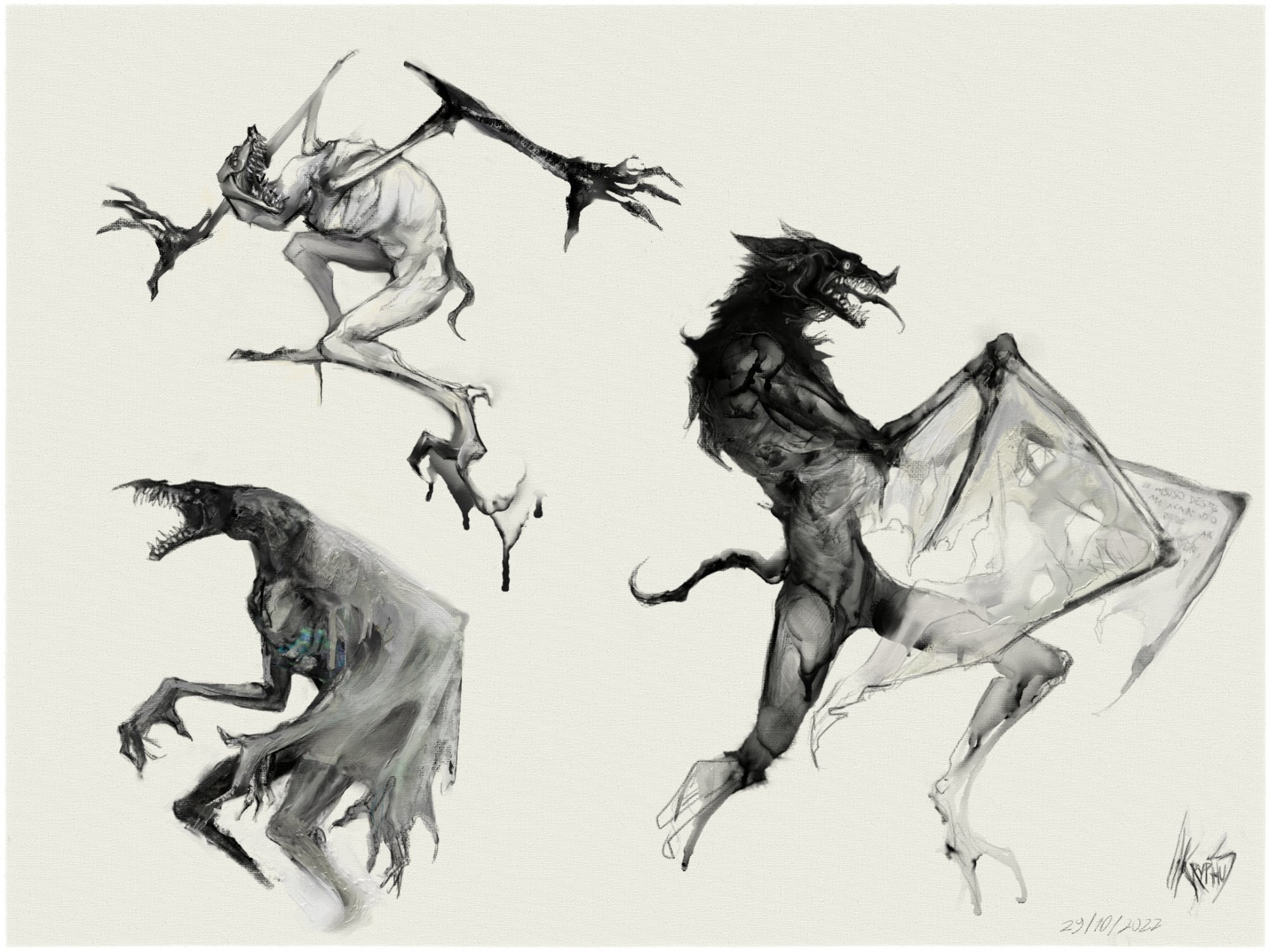 First sketches by Kryphus
First sketches by Kryphus
But where do you begin? Clean lines and readable features are just the tip of the iceberg. Knowing what to exaggerate, how to infuse depth and background, and ultimately, how to breathe life into your creation are essential steps to consider.
2. Explore the Backstory
If you are contributing to someone else’s vision with your artwork, this step of character design is already taken care of and you just need to get familiar with it. However, if you are creating a character from scratch, do not skip this step. It is important to think of the backstory and the background of the character. Why? Because just like with humans, the past influences the present.
Think of the race, language, community, social status, and family situation influencing your character. Did they encounter any trauma or tragedy? Or on the contrary, what makes them happy and content? All this will influence their looks, posture, behavior and develop unique character traits.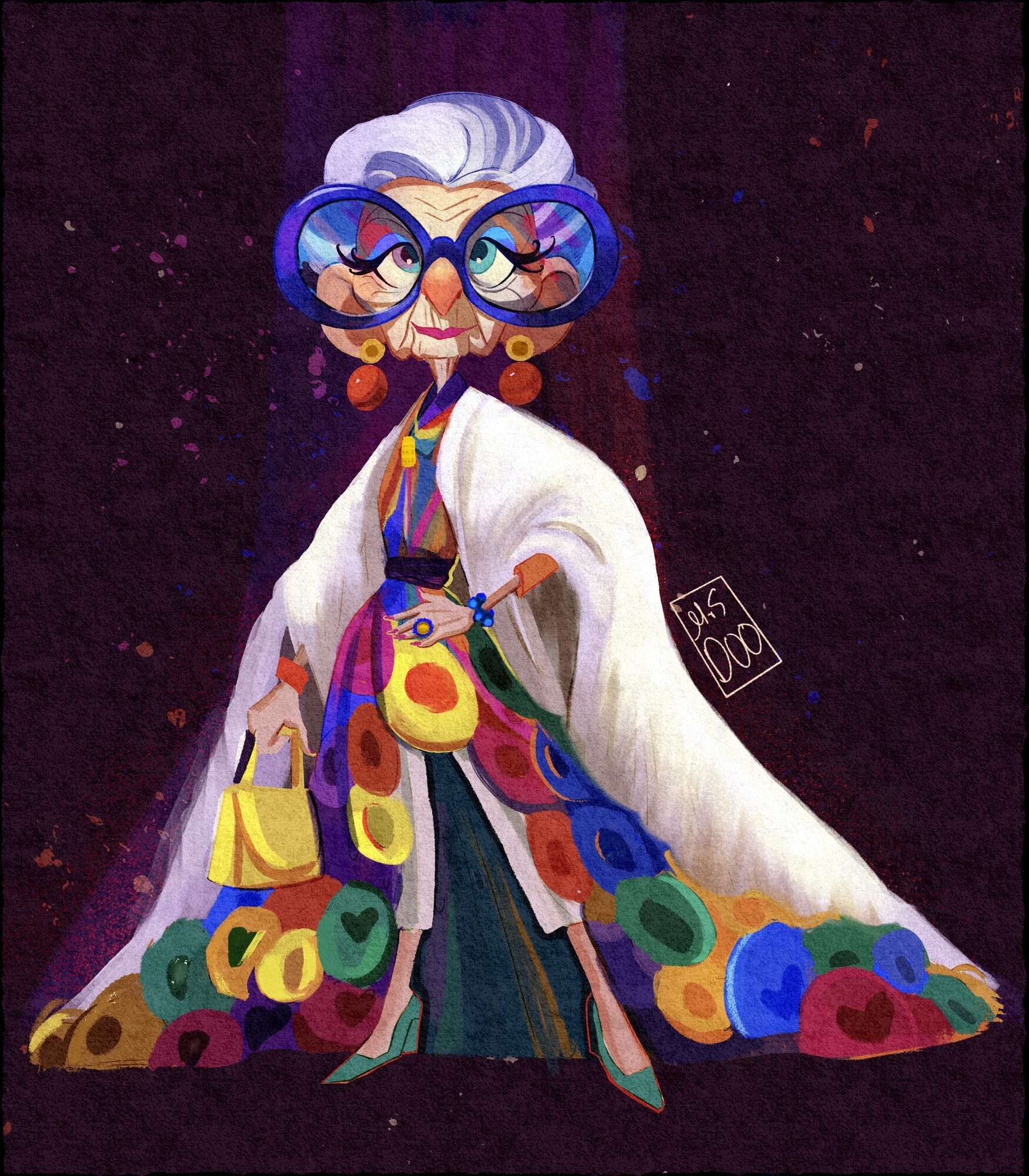 Iris by Sragarabato
Iris by Sragarabato
3. Seek Inspiration in a Real World
Just like with any art project, there are countless options to find inspiration for your character. Look out the window or sit in a coffee shop and observe people around you. See how they walk, what their pace is, or how they communicate with others or on the phone. How do they react when there is a lot of traffic, coffee spilled, or too many people requesting something from them? How do they greet friends or play with kids? Make notes.
You can also find a great amount of inspiration in nature, whether it is for animal kingdom characters or fantasy characters. A walk through the forest trail or a nature documentary can bring a lot of understanding to various species. Green Man by Udnua
Green Man by Udnua
Watching movies or reading comic books is also a great inspiration. You can learn from other creators who once were in the same position as you are right now. Surely, you have your favorite character. What makes them special and unique?
4. Don´t Use Reference
Even though studying different characters is important in the initial research, it is not recommended to use reference images while you are drawing. It is your vision that needs to be transferred to the canvas, not someone else’s. You already know the rules of anatomy. If you need help with proportions, split your canvas to a grid or use guides. Remember, it is your character design and it is a work in progress.
Below is an example of a Minotaur character by Avinash Rajesh. Read the description of this character: "A powerful minotaur stands tall, adorned in majestic Viking-era armor, reminiscent of the noble warriors of old. The minotaur's features are fierce yet regal, its horned head held high with an air of strength and determination. The intricate details of the Viking armor, with its ornate patterns and sturdy design, speak to a time of legendary battles and heroic deeds. The inspiration for this piece came from a clip from 'Chronicles of Narnia,' which likely evoked a sense of adventure and fantasy." As you can see, this beautifully covers the steps - concept, backstory, and inspiration, yet it is uniquely designed.

Minotaur by Avinash Rajesh
5. Know Your Audience
Who are you drawing this character for? Is it just for your practice or will it be a part of your next illustrated book or movie? It is important to know your audience. What generation or age group is it aimed to impress? Who are some role models and heroes that influenced them? Did they grow up on Disney movies or anime? Once you answer these and similar questions, you can find typical features of a hero character or a villain and incorporate these into your design. It will immediately resonate with your audience.
Here are a few examples of characters suitable for different age groups and interests: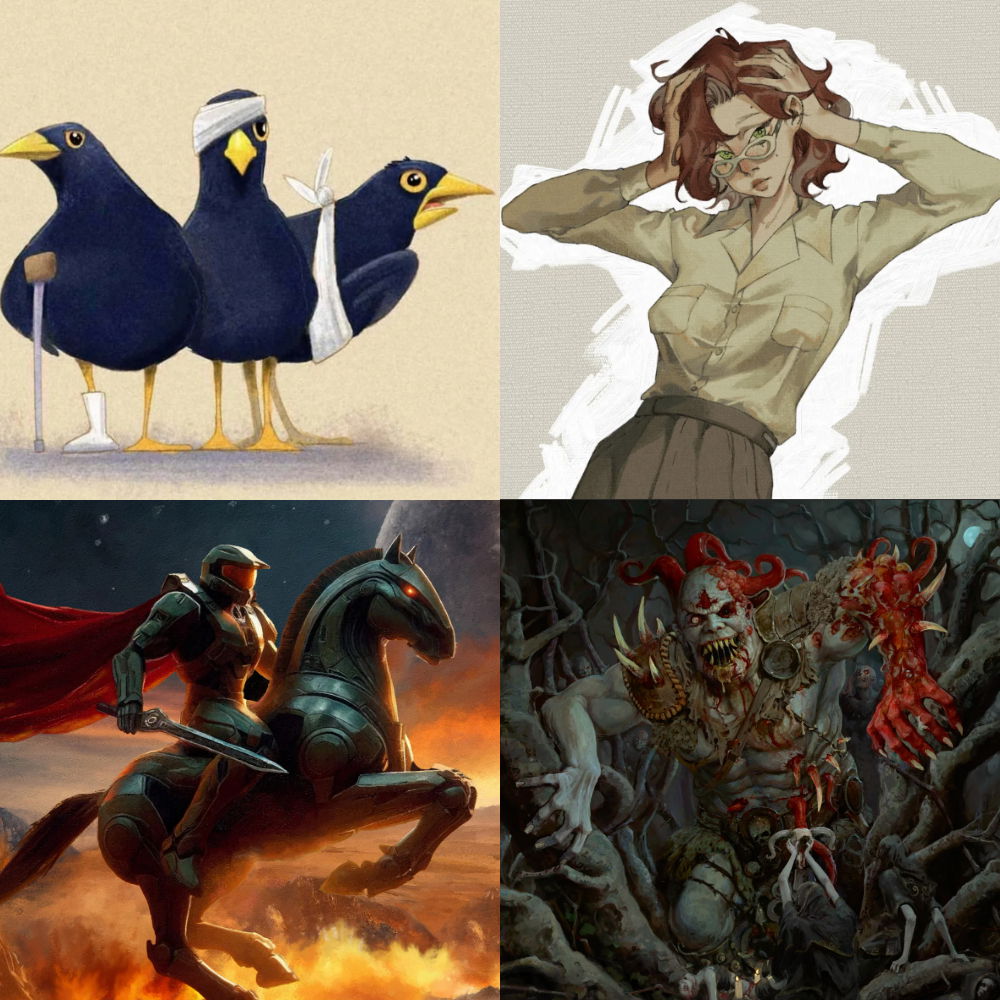 From the top left Blackbirds by Andy O´Rourke, Original Character by Emerv, Mon Spartan by Lease, and Tribute to the Legions of Doom by Sanskarans.
From the top left Blackbirds by Andy O´Rourke, Original Character by Emerv, Mon Spartan by Lease, and Tribute to the Legions of Doom by Sanskarans.
6. Focus on the Silhouette
When designing your character, you are the Creator. Do not be afraid to build wacky body shapes, or exaggerate with features like shoulders, feet, nose, or hair. You can do all this even when sticking with the traditional human or animal body, just make it unique. When it comes to fantasy characters, the limitations are none. Watch the video below to see where to find inspiration for fantasy characters' shapes.
Watch on YouTube: youtu.be/1ZRMM6vBk5k
Imagine iconic characters like the Simpsons or Mickey Mouse. It is most certain you could name them just by looking at their silhouette. That is the goal here. Give your character such unique shapes, that they will be recognizable just by the silhouette.
7. Expressions Speak Volumes
What is your character like? Do they smile or are they grumpy? Besides the body shape, it is very important to give your design a character. Facial expressions and gestures speak volumes. Just remember iconic Snow White’s seven dwarfs. They could have looked the same, but their creator chose to express so many character traits through their faces, gestures, and even names.
Once settled on the character’s main features, try to draw them in different situations, moods, and from different angles. This will help you get familiar with them even more.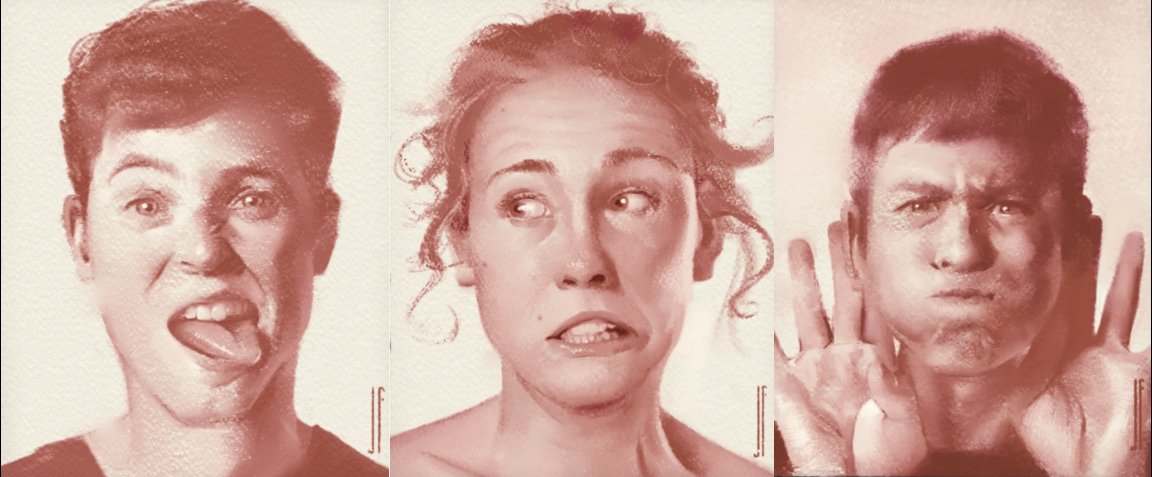 Facial expression examples by Joao Oliveira
Facial expression examples by Joao Oliveira
8. Keep the Colors Simple
If you are familiar with the color theory, you know you have several options to choose from when it comes to colors. Whether you choose the opposite complementary colors, monochromatic colors, triadic colors, or warm or cold parts of the color wheel, keep it simple. Stick to three to four colors with each character and add uniqueness to it on yet another level.
Look at these characters developed in Rebelle by TheOneWiththeBear. They are part of their manhua (comics) series Sunshine Through the Willow Tree. It is fascinating to see the color scheme of each character. The author keeps it simple using just a few colors while creating a unique vibe for each character.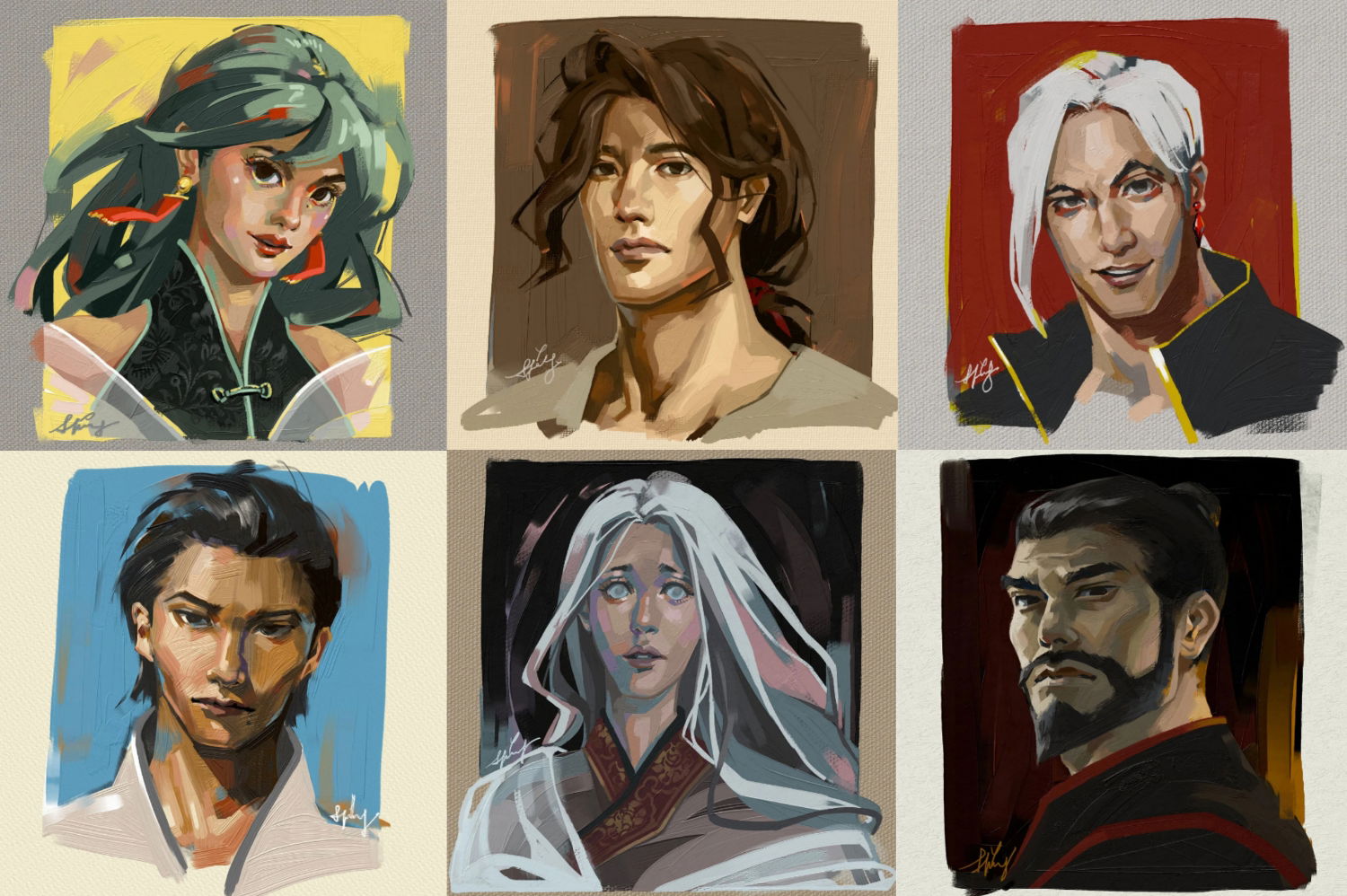
Sunshine Through the Willow Tree characters by TheOneWiththeBear
9. Leave Space for Development
Similarly to building a backstory, hopefully, there is some future for your character as well. Even though you are currently building their present, do not uncover all their personality traits and expressions all at once. Design your character with a future in mind. This way, you will leave your audience curious and excited for more to come.
Were these tips helpful? If so, please leave us a comment with your feedback and let us know which tip was most helpful. Don’t forget to publish your character design to our Community Gallery once it is ready for the world. As soon as you learn these simple principles, you are set for a great start in the character design field.
Stay Creative,
Escape Motions Team
-----
All images for this blog post were done in Rebelle and published in our Community Gallery by their authors.



